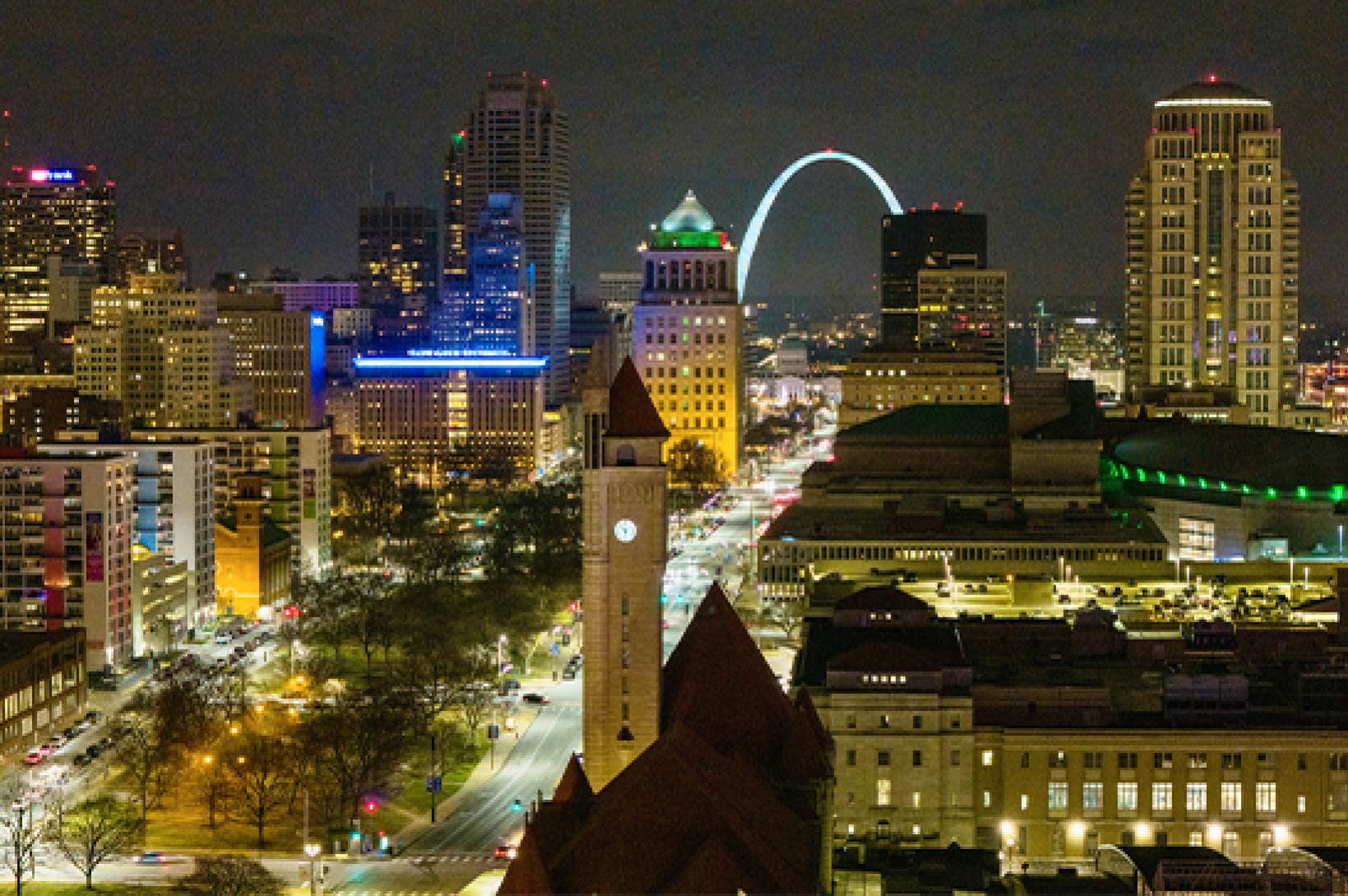
The Wall Street Journal today published a story about some of the challenges Downtown St. Louis faces. Greater St. Louis, Inc. issued the following statement regarding the story:
“We are all acutely aware of the challenges our Downtown faces. This is why ‘Restoring the Core’ of the City of St. Louis, as identified in the STL 2030 Jobs Plan, is a top priority of the business community. We are working on these issues every single day.
“Let’s be clear: the St. Louis metro will not grow without a strong Downtown. The complex challenges we confront in Downtown did not appear overnight, and they will not be fixed overnight.
“But rather than adopt the dramatic, pessimistic tone in the article, the St. Louis region’s civic-minded business community is rallying to address these challenges head on. While there is much work to do, we are making and seeing progress and will continue our work, day in and day out, to make Downtown the world-class neighborhood at the heart of our world-class metro.”
BACKGROUND
The Wall Street Journal story focuses heavily on one problem property as the basis of its negative angle on all of Downtown. The focus of the story is a small section of Downtown that includes challenging properties, most notably the Railway Exchange. GSL is working with a potential development team and local and national experts to develop a program of uses and a financing strategy for Railway.
The Journal story relies on a flawed study from the University of Toronto that only includes a small portion of Downtown St. Louis for its data on economic recovery. The geographic area used for this study doesn’t include major drivers of foot traffic and economic activity Downtown, including the Gateway Arch, CITYPARK Stadium, Enterprise Center, major entertainment and residential districts (Washington Avenue west of Tucker Blvd. and Laclede's Landing, for example), major employers Ameren and Purina, and Union Station.
Data for Downtown’s actual geography shows recovery much greater than study cited in Journal story. See the map below. Data from Placer.ai — an advanced foot traffic analytics platform that uses geospatial data analysis techniques — for the actual, defined boundaries of the Downtown St. Louis neighborhoods show that Downtown/Downtown West has recovered 82% of its 2019 level of total visitors, far greater than the 53% recovery the University of Toronto study shows for the small sub-section of Downtown St. Louis it surveyed.

How the Wall Street Journal study defines Downtown St. Louis is area shaded blue. The actual geography of Downtown St. Louis is in light green.
Momentum Building Downtown. While Downtown St. Louis has long-standing challenges the business community is working to address in partnership with the City and civic partners, it is worth noting that there is momentum building in Downtown St. Louis. Visitors to the Gateway Arch and Downtown hotel bookings are up. Violent crime is down. Several new restaurants have opened recently Downtown. This past weekend saw more than 100,000 visitors to Downtown for a variety of sports and entertainment events.
Greater St. Louis, Inc. and the St. Louis Development Corporation recently partnered on a package of new incentives to attract retail businesses to Downtown St. Louis. The incentive package includes four separate components, all targeted to attracting new retail activity and increasing density and vibrancy at street level Downtown. This suite of retail attraction incentives that is informed by national best practices has generated more than two dozen serious inquiries from retailers within the first week.
Wall Street Journal also highlights St. Louis as one of its “Hottest Job Markets” in the country. The article published in Wednesday’s Wall Street Journal follows the Journal’s publication on Tuesday of this story, which highlights the St. Louis metro’s strong performance on tech jobs growth. The Journal’s analysis found that St. Louis ranked as the 18th hottest job market in the country, ahead of Houston, Las Vegas, Atlanta, Denver, San Antonio, and San Francisco.
Two Wall Street Journal Stories Highlight the Ongoing Work Necessary for St. Louis to Win This Decade. Leading economic indicators like job and GDP growth show that the St. Louis metro is resurgent. In the past few years, St. Louis has put some big wins on the board, from major investments and job announcements to critical civic collaborations that resulted in winning competitive federal grants and nonstop air service to continental Europe. But there is much work yet to do, particularly to restore the metro’s urban core and get our population growing. This is our charge.
Media Contact: Tony Wyche | 314-398-9991 | Tony@GreaterSTLInc.com
